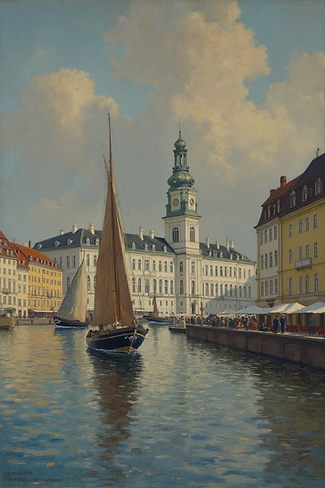top of page


Kingdom of Denmark

With God for honour and justice

Tage Reedtz-Thott

Herman
Severin Løvenskiold

Denmark peacefully became a constitutional monarchy on 5 June 1849. A new constitution established a two-chamber parliament. Much debate took place in Denmark as to how to deal with the question of Schleswig-Holstein. National-Liberals demanded permanent ties between Schleswig and Denmark, but stated that Holstein could do as it pleased. However, international events overtook domestic Danish politics, and Denmark faced war against both Prussia and Austria in what became known as the Second Schleswig War (1864). The war lasted from February to October 1864. Denmark was easily beaten by Prussia and Austria, and obliged to relinquish both Schleswig and Holstein. The war caused Denmark as a nation severe trauma, forcing it to reconsider its place in the world. The loss of Schleswig-Holstein came as the latest in the long series of defeats and territorial loss that had begun in the 17th century. The Danish state had now lost some of the richest areas of the kingdom: Skåne to Sweden and Schleswig to Germany, so the nation focused on developing the poorer areas of the country. Extensive agricultural improvements took place in Jutland, and a new form of nationalism, which emphasized the "small" people, the decency of rural Denmark, and the shunning of wider aspirations, developed. Industrialisation came to Denmark in the
second half of the 19th century. The nation's first railroads were constructed in the 1850s, and improved communications and overseas trade allowed industry to develop in spite of Denmark's lack of natural resources. There was a considerable migration of people from the countryside to the cities. Danish agriculture became centered around the export of dairy and meat products, especially to Great Britain.
bottom of page





